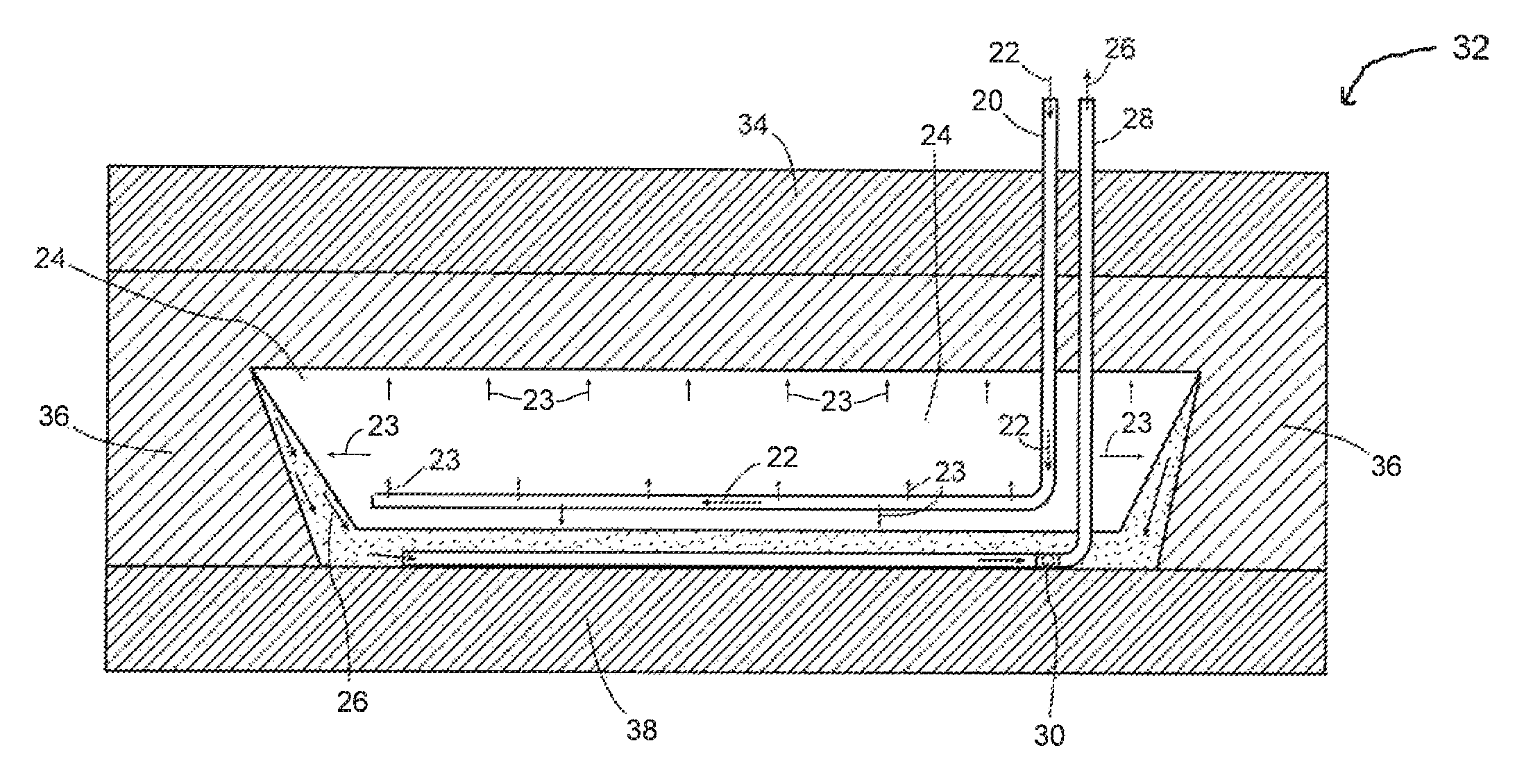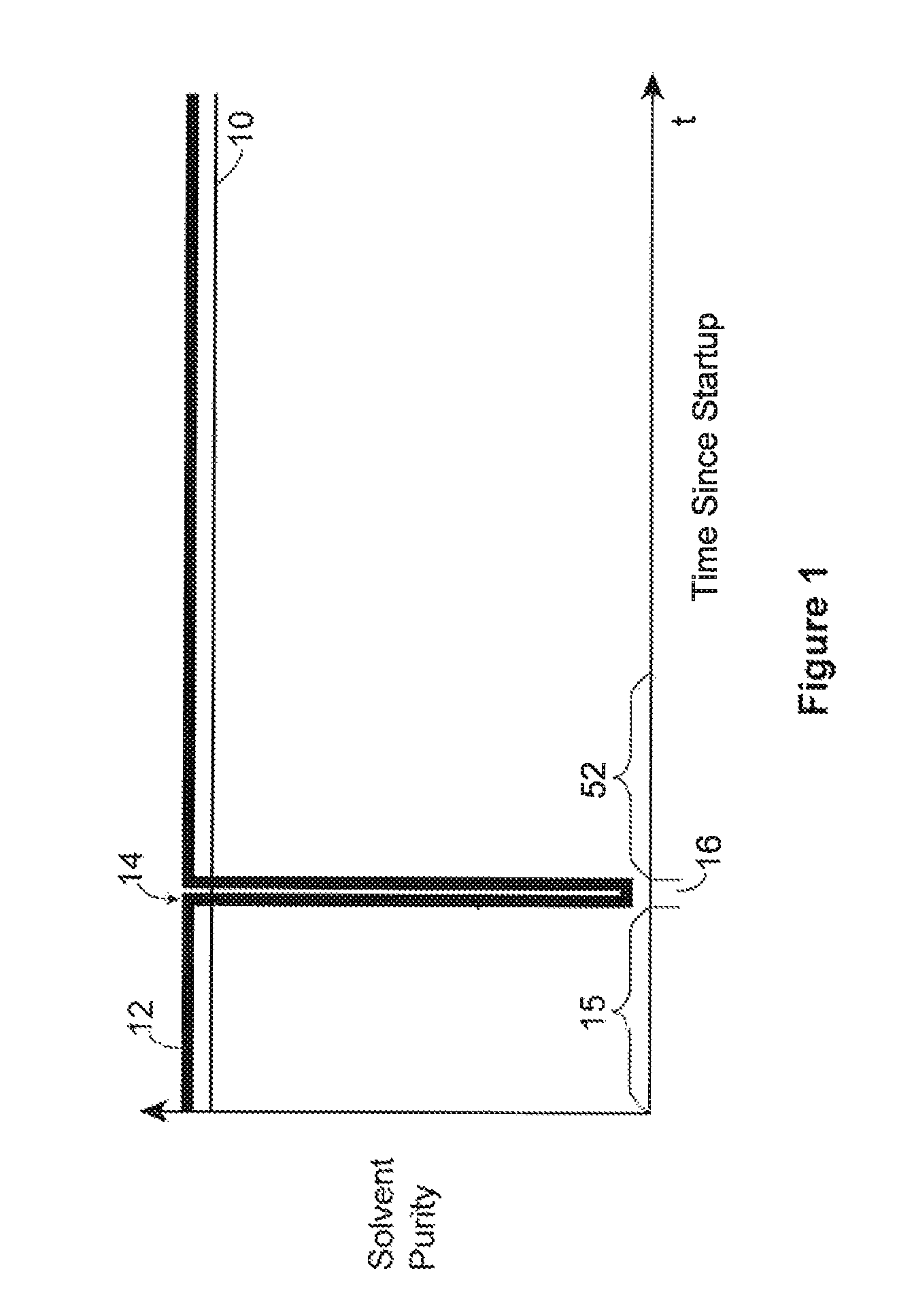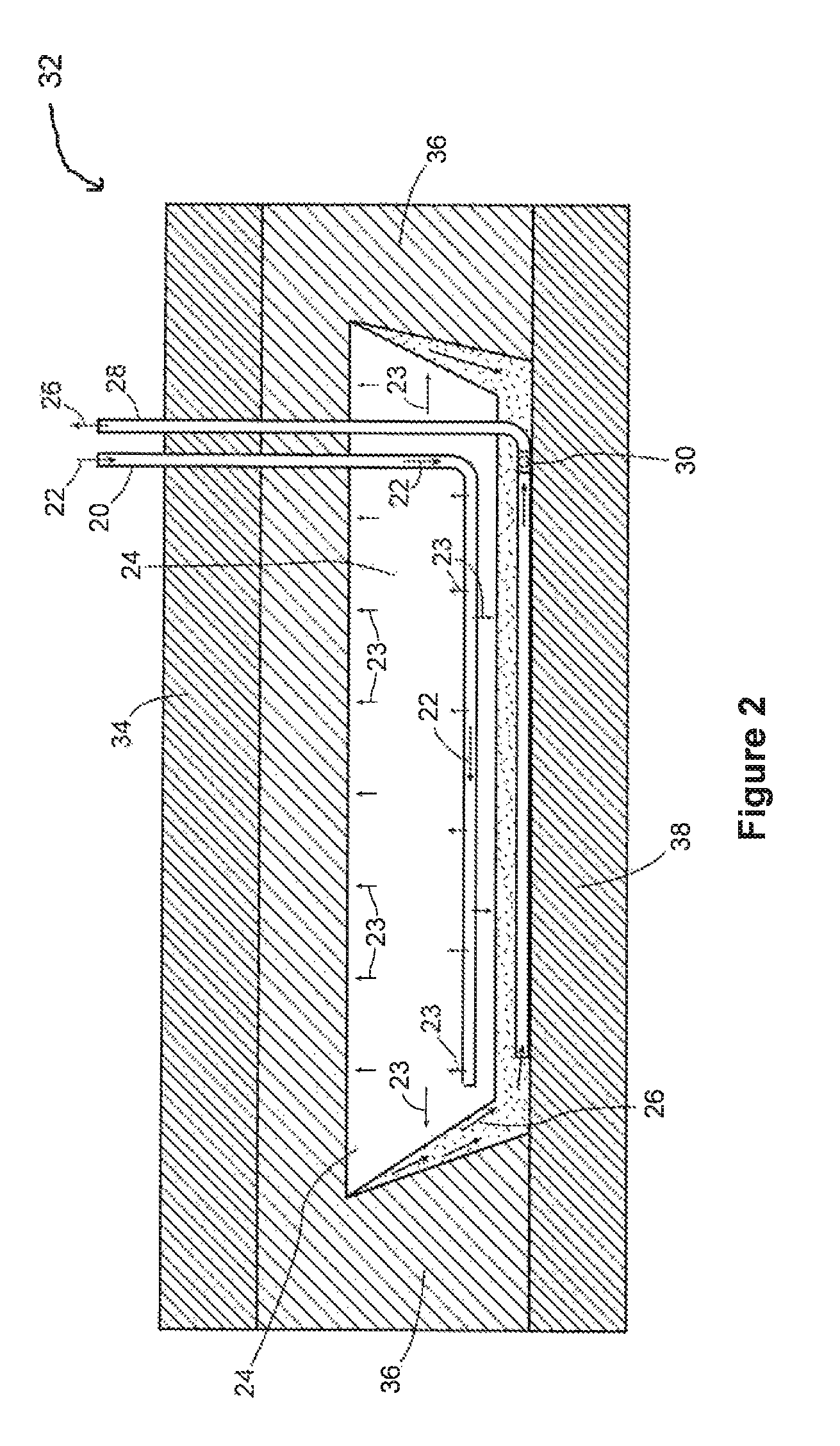Method of controlling growth and heat loss of an in situ gravity draining chamber formed with a condensing solvent process
a gravity draining chamber and condensing solvent technology, applied in the field of in situ hydrocarbon extraction, can solve the problems of poor confinement, inability to extract hydrocarbon from tightly packed sand formations, and undesirable overburden exposed to condensing solvent in the chamber, so as to maximise the thermal efficiency of the condensing solvent process and extract in situ
- Summary
- Abstract
- Description
- Claims
- Application Information
AI Technical Summary
Benefits of technology
Problems solved by technology
Method used
Image
Examples
Embodiment Construction
[0027]In FIG. 1, a time line schematic is provided that generally illustrates the trends of purity of the injected condensing solvent over time according to a first aspect of the present invention. The horizontal or x-axis represents time, and the vertical or y-axis represents solvent purity. A horizontal denoted line 10 is also shown, which represents a desired purity of the solvent which is capable of extracting hydrocarbons and bitumen from the formation. This purity is referred to here in as extraction purity since at this purity hydrocarbon extraction occurs. Extraction purity means a solvent that is pure enough to continuously remove non-condensable gases from the chamber. The precise solvent purity required for extraction purity will vary from reservoir to reservoir depending upon in situ conditions such as pressure, temperature and amount of non-solvent gas naturally present and dissolved into the bitumen.
[0028]Also shown is an injected solvent purity line 12, which represen...
PUM
 Login to View More
Login to View More Abstract
Description
Claims
Application Information
 Login to View More
Login to View More - R&D
- Intellectual Property
- Life Sciences
- Materials
- Tech Scout
- Unparalleled Data Quality
- Higher Quality Content
- 60% Fewer Hallucinations
Browse by: Latest US Patents, China's latest patents, Technical Efficacy Thesaurus, Application Domain, Technology Topic, Popular Technical Reports.
© 2025 PatSnap. All rights reserved.Legal|Privacy policy|Modern Slavery Act Transparency Statement|Sitemap|About US| Contact US: help@patsnap.com



